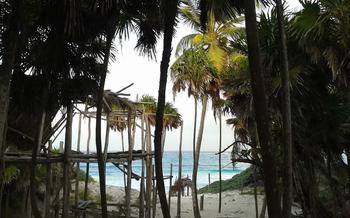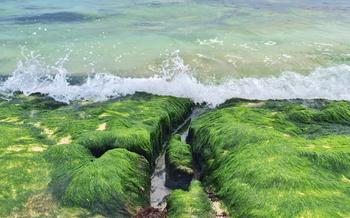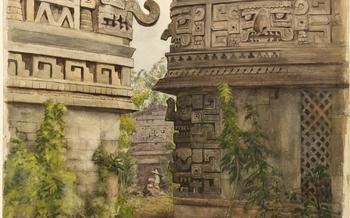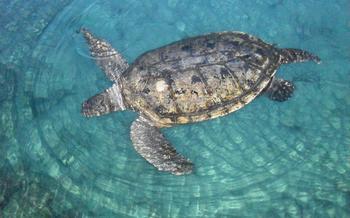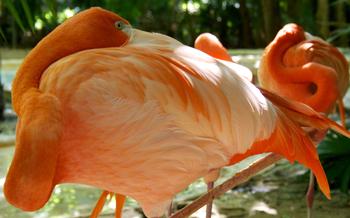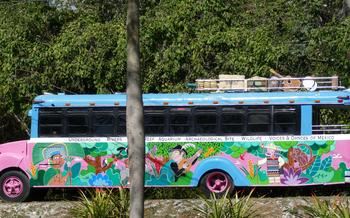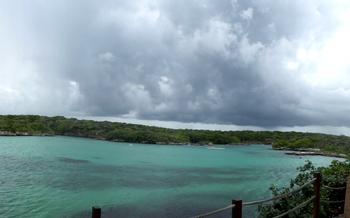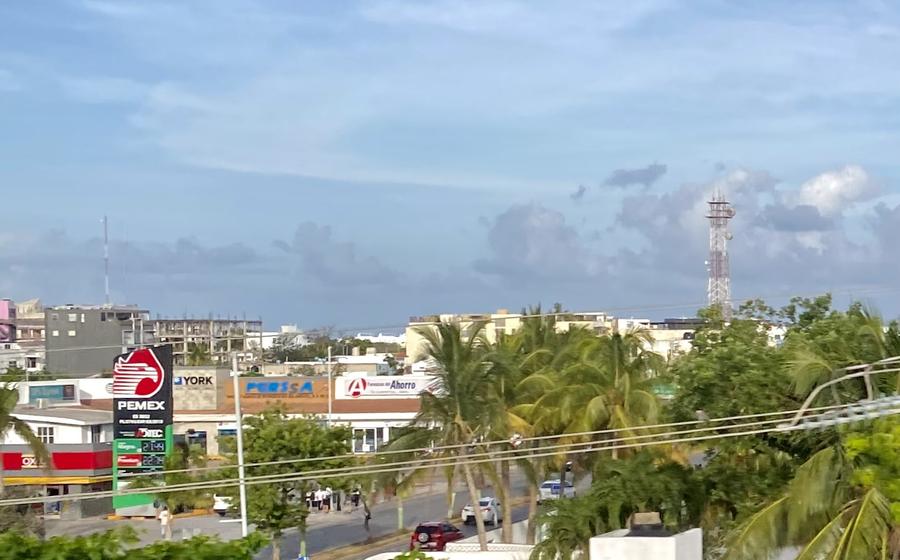
Cenote El Pit (near Tulum)
- The Cenote El Pit, a Hidden Gem
- Getting There
- Swimming and Snorkeling
- Exploring the Cave
- Taking Photos: Capturing the Cenote's Beauty
- Enjoying the Surroundings
- Staying Hydrated
- Respecting the Environment
- Budgeting for the Trip
- Planning Ahead
- Local Customs and Etiquette
- Safety Precautions
- Insider Tip: Discovering a Hidden Paradise
The Cenote El Pit, a Hidden Gem
In the heart of the Riviera Maya, nestled amidst the lush jungles near Tulum, lies a hidden gem known as the Cenote El Pit. This natural wonder is a subterranean marvel, formed by the collapse of a limestone bedrock, creating a deep, crystal-clear pool surrounded by towering limestone walls. As sunlight filters through the jungle canopy, it illuminates the cenote's waters, casting an ethereal glow that enhances its mystical charm.
Practical Information:
- Entrance Fee: Approximately $20-$30 per person, depending on the tour operator.
- Opening Hours: Typically open from 9 am to 5 pm, but it's advisable to check with the tour operator for specific timings.
- Getting There: The cenote is located about 25 km south of Playa del Carmen and can be reached by car, taxi, or organized tour.
Theoretical Notions:
Cenotes are natural sinkholes or caves that are formed when the limestone bedrock collapses, revealing the groundwater beneath. They are a common feature in the Yucatan Peninsula, where the porous limestone allows for water to seep through, creating underground rivers and caverns. Cenotes are not only visually stunning but also hold significant ecological importance, providing a habitat for diverse aquatic species and contributing to the region's unique biodiversity.
Anecdote:
During my visit to the Cenote El Pit, I was captivated by its pristine beauty. The water was so clear that I could see every detail of the rock formations below. As I swam deeper into the cenote, I felt a sense of awe at the sheer magnificence of nature's creation. It was an unforgettable experience that left me with a deep appreciation for the natural wonders of Mexico.
Getting There
The Cenote El Pit lies approximately 50 kilometers south of Playa del Carmen, neighboring Tulum. Several transportation options are available to reach this hidden gem. For a budget-friendly choice, hop on the ADO bus from Playa del Carmen to Tulum, which departs every hour and costs around 10 USD. From Tulum, catch a local colectivo (shared van) to the cenote, which will cost you around 5 USD.
If you prefer a more flexible option, renting a car is a great way to explore the Riviera Maya at your own pace. Rental cars can be found for around 30 USD per day, offering the freedom to visit multiple cenotes and attractions in the area. To get to Cenote El Pit by car, take Highway 307 south from Playa del Carmen and follow the signs to Tulum. Once in Tulum, look for the sign for Cenote El Pit on the left-hand side of the road.
The scenic drive from Playa del Carmen to Cenote El Pit takes about an hour and offers breathtaking views of the Caribbean coastline. Along the way, you'll pass through lush jungle landscapes and charming Mayan villages. Make sure to bring your camera to capture the beauty of the journey.
Swimming and Snorkeling
The Cenote El Pit boasts crystal-clear waters with visibility that extends up to 30 meters, making it an ideal spot for swimming and snorkeling. Plunge into the refreshing waters and marvel at the vibrant marine life that inhabits this natural aquarium. Schools of colorful fish, such as parrotfish, angelfish, and damselfish, dart in and out of the coral formations, creating a mesmerizing underwater spectacle.
For those who wish to explore the cenote's depths, snorkeling equipment is available for rent on-site. Don your mask, snorkel, and fins, and immerse yourself in the underwater world. Observe the intricate details of the coral reefs, home to a diverse array of marine creatures, including sea turtles, rays, and even the occasional nurse shark.
The cenote also features designated swimming areas for those who prefer to take a leisurely dip. Life jackets are provided for added safety, ensuring a comfortable and enjoyable experience for visitors of all ages.
Theoretical Notions:
The Cenote El Pit is part of a complex underwater ecosystem that supports a wide variety of marine life. The cenote's crystal-clear waters allow sunlight to penetrate deep into the cave, creating ideal conditions for the growth of aquatic plants and algae. These plants and algae serve as a food source for a variety of small organisms, which in turn attract larger predators, such as fish, turtles, and sharks.
The cenote's unique environment also provides a habitat for several endangered species, such as the Yucatán cavefish and the blind cave shrimp. These species have adapted to the unique conditions of the cenote, such as the lack of light and the high levels of dissolved minerals.
Anecdote:
During my visit to the Cenote El Pit, I had an unforgettable encounter with a friendly sea turtle while snorkeling. As I glided through the crystal-clear waters, I spotted a large, majestic turtle swimming towards me. The turtle seemed completely unfazed by my presence and allowed me to swim alongside it for several minutes. It was a magical moment that left me in awe of the beauty and tranquility of this natural wonder.
Exploring the Cave
The Cenote El Pit offers more than just a refreshing swim; it also boasts a hidden cave system waiting to be explored. Guided tours are available for those seeking an adventurous spelunking experience. Equipped with headlamps, visitors can venture into the depths of the cave, where they will encounter stunning stalactite formations and hidden chambers.
The cave's intricate network of tunnels and chambers was formed by the erosive power of water over thousands of years. As rainwater seeped through the limestone bedrock, it dissolved the rock, creating underground cavities and passageways. The stalactites, which hang from the ceiling like icicles, are formed by the slow deposition of minerals from the dripping water.
Exploring the cave is a unique and awe-inspiring experience that allows visitors to witness the wonders of the natural world firsthand. The guides provide valuable insights into the geology and history of the cave, making the tour both educational and captivating.
Anecdote:
During my exploration of the cave, I stumbled upon a hidden chamber that was not part of the guided tour. As I ventured deeper into the darkness, I noticed a narrow opening tucked away behind a cluster of stalactites. Curiosity got the better of me, so I squeezed through the opening and found myself in a secret chamber filled with towering stalagmites and glistening stalactites. It was like stepping into a hidden world, untouched by time and visitors. The feeling of awe and wonder was overwhelming, and I couldn't help but marvel at the beauty of this hidden gem.
Taking Photos: Capturing the Cenote's Beauty
The crystal-clear waters and vibrant marine life of Cenote El Pit make it a photographer's paradise. To capture the cenote's ethereal beauty, consider bringing a waterproof camera or a smartphone with a waterproof case. Pro tip: Utilize underwater photography modes or settings to enhance the vibrancy of your shots.
Experiment with different angles and perspectives to create dynamic compositions. Theoretical insight: Play with the interplay of light and shadow to add depth and drama to your photos. Don't forget to explore the cenote's hidden corners and caves for unique shots.
For stunning sunrise or sunset shots, plan your visit accordingly and arrive early to secure a good spot. Anecdote: I once spent a magical morning at the cenote, capturing the sun's golden rays illuminating the stalactites and casting a warm glow on the water's surface. It was a moment of pure photographic bliss.
Enjoying the Surroundings
The Cenote El Pit is surrounded by lush vegetation and abundant wildlife, providing visitors with an opportunity to immerse themselves in the beauty of the natural world. Well-maintained trails wind through the jungle, leading to hidden corners and secluded spots where one can escape the crowds and enjoy the peace and tranquility of nature. Birdwatching enthusiasts will delight in the diverse array of tropical birds that call this area home, from colorful parrots and toucans to majestic eagles and hawks. Keep an eye out for other wildlife as well, such as curious raccoons, playful monkeys, and even the occasional crocodile sunning itself on the banks of the cenote.
One of the highlights of exploring the surroundings is the opportunity to discover hidden cenotes and natural swimming holes. Just a short walk from the main cenote, there are several smaller cenotes tucked away in the jungle, each with its unique charm and beauty. These hidden gems offer a more intimate and secluded experience, perfect for those seeking a tranquil escape.
Staying Hydrated
The tropical heat of Mexico can be relentless, especially during the summer months. It's important to stay hydrated throughout your visit to Cenote El Pit to avoid any discomfort or health risks. Water stations are conveniently located throughout the cenote grounds, so you can refill your water bottle as needed. Alternatively, you can bring your own reusable water bottle and fill it up at your hotel or hostel before heading out.
In addition to water, it's also a good idea to consume electrolyte-rich drinks, such as sports drinks or coconut water. Electrolytes help to replenish the minerals that are lost through sweat, which can help to prevent dehydration and fatigue.
Here's a humorous anecdote to illustrate the importance of staying hydrated:
During my first visit to Cenote El Pit, I was so excited to explore the cave and jump from the cliffs that I completely forgot to bring water with me. As the day went on, I started to feel increasingly thirsty and tired. By the time I realized that I was dehydrated, it was almost too late. I started to feel dizzy and lightheaded, and I had to sit down and rest for a while. Luckily, one of the lifeguards noticed that I wasn't feeling well and brought me a bottle of water. I drank it down in one gulp and immediately started to feel better. From that day on, I always make sure to bring plenty of water with me whenever I visit Cenote El Pit!
Respecting the Environment
The Cenote El Pit is a natural wonder that should be treated with care and respect. Visitors should make every effort to minimize their impact on the environment and protect the delicate ecosystem of the cenote. This includes properly disposing of waste, avoiding the use of chemicals, and respecting the wildlife that calls the cenote home.
Practical Information:
- Waste disposal bins are provided throughout the cenote area. Please use them to dispose of any trash or recyclables.
- Avoid using sunscreen or insect repellent that contains chemicals that could harm the water quality.
- Be respectful of the wildlife. Do not touch or disturb the animals, and avoid feeding them.
Theoretical Notions:
- Tourism can have a significant impact on the environment, both positive and negative. It is important to be mindful of the potential negative impacts and take steps to minimize them.
- Sustainable tourism practices can help to protect the environment and ensure that the cenote remains a pristine and beautiful place for future generations to enjoy.
Anecdote:
On one of my visits to the Cenote El Pit, I witnessed a group of visitors cleaning up trash that had been left behind by others. It was inspiring to see people taking the initiative to protect the environment and ensure that the cenote remained clean and beautiful for everyone to enjoy.
Budgeting for the Trip
Before embarking on your adventure to Cenote El Pit, it's essential to consider the associated costs to ensure a financially smooth trip. The entrance fee to the cenote is approximately $10-$15 USD, providing access to its natural beauty and various activities. Transportation costs will depend on your chosen mode of travel. If opting for a guided tour from Playa del Carmen, expect to pay around $30-$50 USD, including round-trip transportation and a knowledgeable guide. If you prefer the flexibility of renting a car, factor in rental fees, gas expenses, and parking charges.
Food and beverage expenses can vary depending on your preferences. Pack a picnic lunch to save money and enjoy a leisurely meal surrounded by nature's tranquility. Alternatively, there are local restaurants and cafes near the cenote offering a range of options to suit different budgets. Remember to bring cash, as credit card facilities may be limited.
To save money, consider visiting the cenote during the shoulder season (May-June and September-October), when prices are generally lower, and crowds are smaller. Additionally, look out for discounts and promotions offered by tour operators or through online booking platforms. With a little planning and budgeting, you can experience the wonders of Cenote El Pit without breaking the bank.
Planning Ahead
Making the Most of Your Cenote El Pit Adventure
To make the most of your visit to Cenote El Pit, a little planning and preparation go a long way. Here are some tips to ensure a smooth and enjoyable experience:
- Book in Advance:
-
During peak tourist season, it's advisable to book your cenote tour or entrance in advance, especially if you're visiting during holidays or weekends. This will guarantee your spot and avoid long lines.
-
Consider the Weather:
-
The weather in the Riviera Maya can be unpredictable, so check the forecast before your visit. If there's a chance of rain, pack a raincoat or umbrella. The cenote offers shelter from the rain, but swimming may not be as enjoyable.
-
Pack Essentials:
-
Don't forget your swimsuit, towel, water shoes, and sun protection. A waterproof camera or case is also recommended to capture the vibrant underwater world.
-
Arrive Early:
-
To beat the crowds and enjoy the cenote's tranquility, aim to arrive early in the morning. The cenote opens at 8 AM, and the earlier you arrive, the fewer people you'll encounter.
-
Stay Hydrated:
-
The tropical heat can be dehydrating, so bring a refillable water bottle and stay hydrated throughout your visit. The cenote has water stations where you can refill your bottle.
-
Be Flexible:
- Sometimes, things don't go according to plan when traveling. Be prepared for unexpected changes, such as weather or transportation delays. Embrace the spontaneity and enjoy the journey as it unfolds.
Local Customs and Etiquette
When visiting the Cenote El Pit, it is important to be respectful of local customs and etiquette.
Practical Information:
- Dress code: While swimwear is appropriate for swimming and sunbathing, it is recommended to cover up when exploring the surrounding area.
- Tipping etiquette: Tipping is customary in Mexico, and a small tip is appreciated for services such as guided tours or food and beverages.
- Language barriers: Spanish is the official language of Mexico, and while some locals may speak English, it is helpful to learn a few basic Spanish phrases.
Theoretical Notions:
- Cultural sensitivity: It is important to be sensitive to local customs and traditions, and to avoid any behavior that may be considered disrespectful or offensive.
- Adapting to local norms: When traveling to a foreign country, it is important to be open-minded and willing to adapt to local norms and customs.
Anecdote:
During my visit to the Cenote El Pit, I witnessed a situation where a group of tourists were loudly talking and laughing, and were not respecting the peaceful atmosphere of the cenote. A local guide approached them and politely asked them to be more respectful, explaining that the cenote is a sacred place for the Mayan people. The tourists were apologetic and agreed to be more mindful of their behavior.
Safety Precautions
Ensuring a Safe and Enjoyable Experience at the Cenote
The Cenote El Pit is a natural wonder, but safety should always come first. Life jackets are mandatory for swimming and snorkeling, and designated swimming areas are marked for your protection. It's important to stay within these designated areas and avoid swimming near the cave entrance or under overhanging rocks. Emergency contacts are displayed prominently, and lifeguards are on duty during peak hours to assist with any emergencies.
Anecdote:
During my visit, I witnessed a near-accident when a group of swimmers ventured too close to the cave entrance. Suddenly, a strong current pulled them towards the opening, and they struggled to stay afloat. Fortunately, a lifeguard quickly noticed their distress and swam over to help them. The lifeguard guided them back to safety, reminding them of the importance of staying within the designated swimming areas. This incident served as a reminder that safety regulations are in place for a reason, and it's crucial to follow them to ensure a safe and enjoyable experience for everyone.
Insider Tip: Discovering a Hidden Paradise
In the heart of Cenote El Pit, a secret chamber awaits discovery. Concealed behind a narrow passage, this hidden gem is a photographer's dream, boasting stunning stalactite formations that shimmer under the water's surface.
To reach this secluded paradise, swim through the main chamber and look for a small opening on the left side. Follow the passage, and you'll be rewarded with a breathtaking sight. The walls are adorned with intricate stalactites, creating a magical underwater landscape.
For the best photo opportunities, visit the cenote during the early morning or late afternoon when the sunlight filters through the water, illuminating the stalactites with a golden glow.
Remember, this hidden chamber is a fragile ecosystem, so please tread carefully and avoid touching the stalactites to preserve their beauty for future generations to enjoy.

